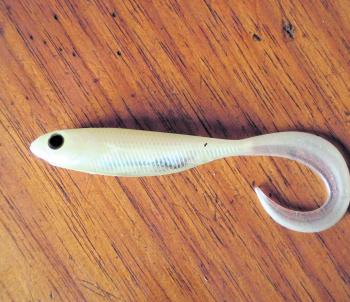We are still in the rigid grip of winter with not many days conducive to chasing fish in the great outdoors. The rain keeps falling, which we still need to give our rivers a decent flush out. All our estuaries are currently open to the sea, including the Curdies River, which was manually opened in late June.
Most of our rivers receive run-off from farmland. This water is high in nutrients from the fertilizers used to promote fodder growth. This water needs to be flushed out to sea to prevent algal blooms taking hold in the warmer months. An influx of highly oxygenated salt water pouring in also helps to promote a healthy estuary.
The bream in the Curdies have spread throughout the system, and while many remain in the lower reaches of the river, more have entered the lake in their quest for food. On any given day they can be hard to locate. I can attest to this as I recently spent much of the day trying to find a school of feeding fish. The bream that I caught were very welcome indeed. I used a variety of metal vibe lures as well as soft plastics. Three hours into a cool late July morning, a Fish Arrow 4.5’’ Flash-J Grub in white/silver finally worked. I hoped this plastic would imitate the local ‘greyback’ minnow that are often found in this estuary, along with shrimp for bream.
Those bank fishing down near the mouth, or fishing out of tinnies in the lower channel have found bream. Bait has been the number one attraction and even packet frozen baits, such as prawn and whitebait, have been successful. Anglers who could source scrubworm and small yabbies have also had success.
The sheer amount of run-off entering the river upstream, combined with high seas, has slowed down the run-out of fresh water and halted the influx of highly oxygenated salt water. This explains why most of the fish caught to date have been taken in the lower half of the lake. The Gellibrand River at Princetown has the same problem, on a higher scale. The river flows out of the Otway Ranges, which attract the highest rainfall in the state, so the water is very turbid there at present.
Some excellent gummy sharks around 14kg have been caught off the surf beaches. Gibsons Steps is one of the popular spots to wet a line. Baits like cut freshwater eel, pinned onto ganged hooks and secured with hosiery elastic, is the way to go. These sharks are mainly taken after dark in the gutters, right behind the wash. Pieces of eel are tough and resist being eaten by sea lice and crabs with the skin left on.
During the day, schools of feeding Australian salmon inhabit these same beaches. Chrome slices, pilchard and squid baited on a double paternoster rig are all working. Don’t forget to introduce berley into the wash to increase your chances of hook-up.
King George whiting, up to 38cm, have been caught off the Port Campbell jetty in recent times. The fish are only responding to pipi meat, and with rough seas, the chance to nail a whiting has been reduced, even though fish are there waiting to be caught. A word of caution: don’t fish off the bottom platform of the jetty during rough seas, especially at night. These often get inundated with water.
1
A Fish Arrow 4.5’’ Flash J Grub in glow/silver is the soft plastic that may be a good imitation of the local ‘greyback’ minnow in the Curdies.
Reads: 973




